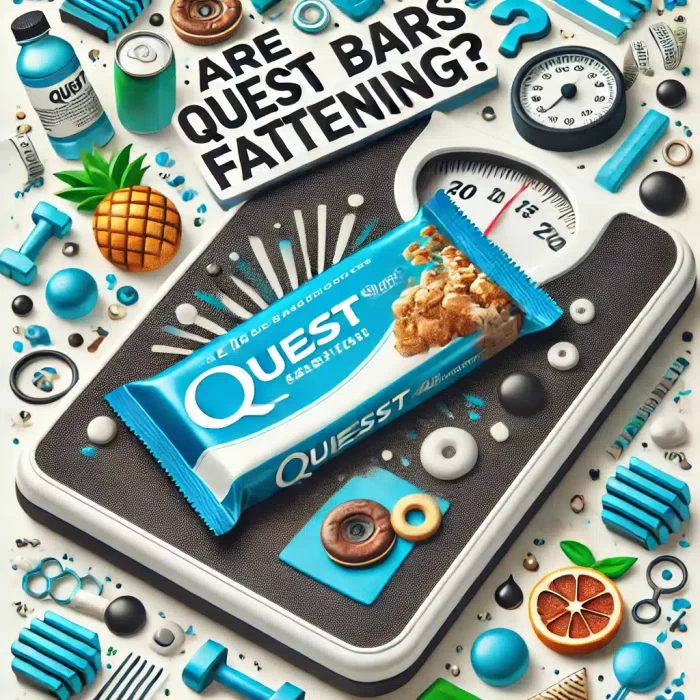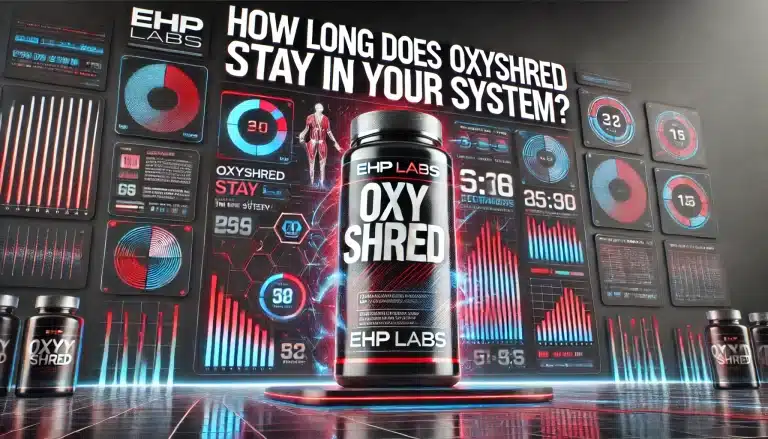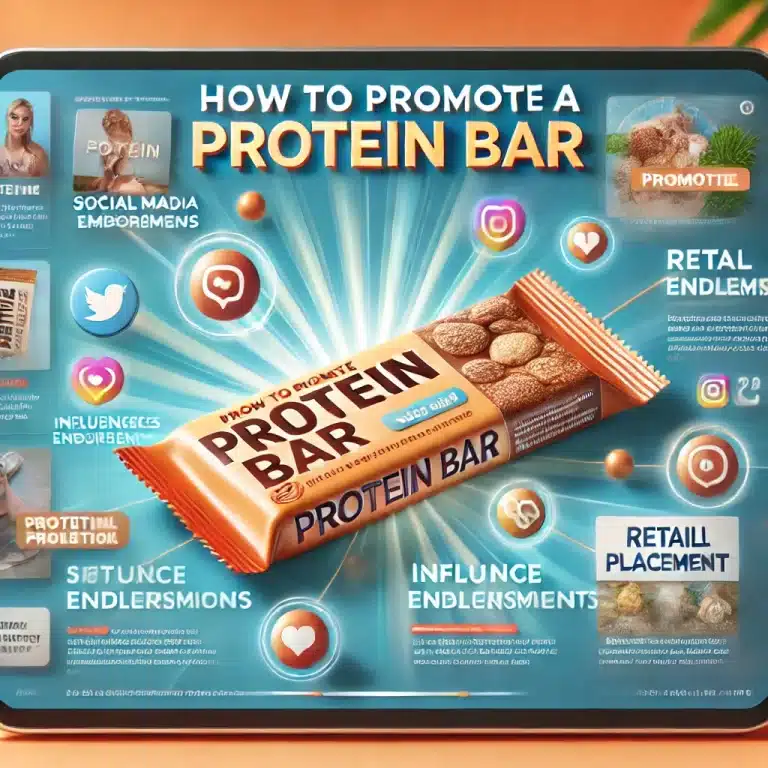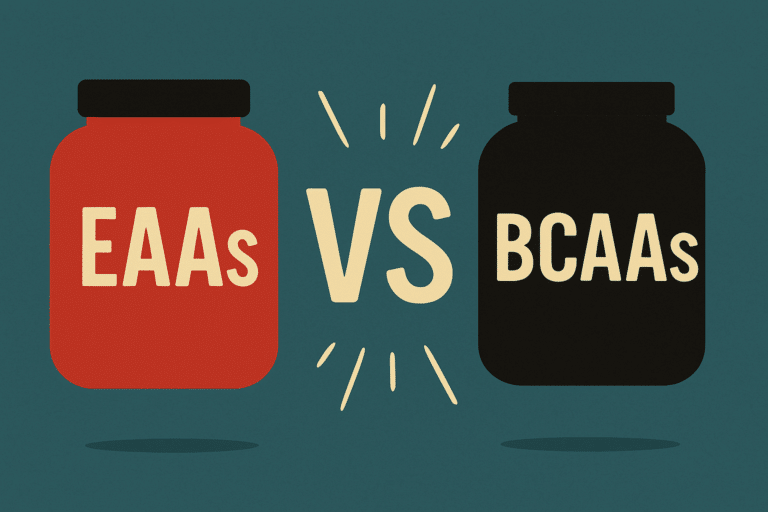Are Quest Bars Fattening?
Quest Bars have become a go-to snack for fitness enthusiasts, busy professionals, and anyone looking for a quick, protein-packed option. Marketed as a healthier alternative to traditional snack bars, they promise high protein, low sugar, and satisfying flavors. But if you’re watching your weight, you might wonder: Are Quest Bars fattening? With all the hype around protein bars, it’s easy to get confused about whether they support your health goals or secretly sabotage them. Let’s break it down with a balanced, real-world perspective to help you make informed decisions.
What’s Inside a Quest Bar?
Before we label Quest Bars as fattening or not, it’s important to look at what’s actually in them. A typical Quest Bar contains:
- Calories: Around 180-210 per bar
- Protein: 20-21 grams
- Carbohydrates: 20-25 grams (with high fiber and low net carbs)
- Fiber: 12-15 grams
- Fat: 7-9 grams
The ingredients include protein isolates (like whey and milk protein isolate), fiber (such as soluble corn fiber), nuts, natural flavors, and sweeteners like erythritol and stevia. Many flavors also contain small amounts of chocolate chunks, peanut butter gluten-free, or other mix-ins that enhance taste.
What stands out is the high protein and fiber content, both known for promoting fullness. The low sugar content is another plus, especially for those mindful of blood sugar levels. However, since Quest Bars are processed foods, they also contain ingredients like sugar alcohols, which can affect digestion in some people.
Are Quest Bars Fattening?

The short answer: Not inherently. Like any food, Quest Bars can contribute to weight gain if they lead to a calorie surplus, meaning you’re consuming more calories than your body burns. Weight gain happens when you consistently eat more calories than your body needs, regardless of whether those calories come from Quest Bars, salads, or donuts.
However, the high protein and fiber content can help with satiety, making you feel fuller longer, which can aid in weight management. Protein helps preserve lean muscle mass while promoting fat loss, and fiber slows digestion, keeping hunger at bay. In this sense, Quest Bars can be a helpful tool if you’re trying to control your appetite.
That said, it’s easy to overlook their calorie content, especially because they taste so good. Some people treat them like guilt-free snacks, eating multiple bars a day, which can add up quickly in calories. So, while they’re not fattening on their own, how they fit into your overall diet matters most.
Why Some People Think They’re Fattening:
- Portion Control Issues: Because they taste good (almost like candy bars), it’s easy to eat more than one without realizing it. Two Quest Bars? That’s 400+ calories, which can add up quickly. Unlike whole foods, which often come with natural stopping points (like the end of an apple or a handful of almonds), processed snacks can trick your brain into eating more because they’re designed to be super palatable.
- Hidden Calories: Some flavors have added ingredients like chocolate chunks, caramel swirls, or nut butter, which slightly increase the calorie count. These additions might seem small, but they can make a difference if you’re not mindful, especially if you eat Quest Bars regularly.
- Mindless Snacking: Grabbing a bar out of habit, not hunger, can lead to unnecessary calorie intake. It’s easy to fall into the trap of thinking, “It’s healthy, so it doesn’t count,” but calories still add up, even from healthier options. Eating out of boredom, stress, or convenience without attention to hunger cues can consume extra calories over time.
When Quest Bars Can Fit Into a Healthy Diet:
- Meal Replacement: If you’re in a rush, a Quest Bar is a better option than fast food. It provides protein, fiber, and healthy fats, helping you stay full until your next meal. Just pair it with something fresh, like a piece of fruit or some veggies, to round out the nutrients.
- Post-Workout Snack: The protein helps with muscle recovery after exercise, making it a convenient choice when you don’t have time to prep a full meal. The balance of protein and carbs can support muscle repair and replenish energy stores.
- Craving Control: They can satisfy sweet cravings without the sugar spike of a candy bar. If you have a sweet tooth, swapping a candy bar for a Quest Bar can be a smart move, you’re getting that indulgent flavor with the bonus of protein and fiber to keep you full.
- Travel or On-the-Go: Quest Bars are easy to carry, non-perishable, and don’t require refrigeration. They’re perfect for long trips, hikes, or busy days when healthy food options are limited.
Are Quest Bars Gluten-Free?
Yes, Quest Bars are gluten-free. They are made without wheat, barley, or rye, which makes them suitable for people with gluten sensitivities or celiac disease. This is great news if you follow a gluten-free diet but still want a convenient snack option. However, while Quest Bars are certified gluten-free, they are manufactured in facilities that may also process gluten-containing ingredients. If you have celiac disease or a severe gluten intolerance, it’s always wise to check the packaging for any cross-contamination warnings and consult with your healthcare provider if you’re unsure.
Additionally, being gluten-free doesn’t automatically mean being healthier. Quest Bars are still processed foods, so while they’re gluten-free, it’s essential to focus on the overall quality of your diet, incorporating whole, nutrient-dense foods alongside convenient snacks like these.
How Many Calories Are in a Quest Bar?
Most Quest Bars contain between 180 and 210 calories, depending on the flavor. This calorie range makes them a moderate snack option, comparable to a small meal or a hearty snack. While this might not seem like much, it’s important to remember that calories can add up quickly, especially if you find yourself reaching for multiple bars throughout the day.
The calorie content comes from a mix of protein, fiber, fats, and sugar alcohols. High-protein bars like Quest are designed to be filling, so one bar should satisfy your hunger for a while. However, the key to managing your weight is balancing your overall calorie intake throughout the day. Whether you’re counting calories strictly or following intuitive eating, keeping an eye on how Quest Bars fit into your daily intake can help you stay on track with your goals.
Are Quest Bars Keto-Friendly?
Yes, Quest Bars can fit into a keto diet due to their low net carb content, which typically ranges from 4 to 6 grams per bar. This is achieved by using high fiber and sugar alcohols, which have little impact on blood sugar levels. For many people on keto, Quest Bars are a convenient way to satisfy cravings without knocking themselves out of ketosis.
However, it’s worth noting that not all Quest Bar flavors are created equal. Some contain slightly higher net carbs, which might be an issue for strict keto followers. Also, while the bars are low in carbs, they are still processed foods, and whole, nutrient-dense foods are generally recommended for optimal health on keto. If you’re following keto for medical reasons, always check the nutrition label to ensure the carb count fits your limits.
Tips to Enjoy Quest Bars Without Overdoing It:
- Stick to One Bar Per Day: While it’s tempting to have more (because they taste great), treat them as a snack, not a meal replacement unless necessary.
- Pair with Whole Foods: Add a piece of fruit, a handful of nuts, or some veggies on the side to create a more balanced snack or meal.
- Be Mindful of Your Hunger: Ask yourself if you’re hungry or just craving something sweet. If it’s the latter, maybe a glass of water or a short walk could help.
- Plan Ahead: If you know you’ll be busy, pack a Quest Bar as part of your meal prep. This prevents impulsive snacking on multiple bars when hunger hits unexpectedly.
- Avoid Eating Out of Boredom: It’s easy to reach for a protein bar when you’re bored or stressed. Keep healthy distractions like hobbies, exercise, or connecting with friends to curb mindless snacking.
- Mix It Up: Instead of eating Quest Bars daily, alternate with whole-food snacks like Greek yogurt, hard-boiled eggs, or fresh fruit to keep your diet varied and balanced.
By using these strategies, you can enjoy Quest Bars as part of a healthy lifestyle without overindulging or derailing your goals.
When Quest Bars Can Fit Into a Healthy Diet:
- Meal Replacement: If you’re in a rush, a Quest Bar is a better option than fast food. It provides protein, fiber, and healthy fats, helping you stay full until your next meal. Just pair it with something fresh, like a piece of fruit or some veggies, to round out the nutrients.
- Post-Workout Snack: The protein helps with muscle recovery after exercise, making it a convenient choice when you don’t have time to prep a full meal. The balance of protein and carbs can support muscle repair and replenish energy stores.
- Craving Control: They can satisfy sweet cravings without the sugar spike of a candy bar. If you have a sweet tooth, swapping a candy bar for a Quest Bar can be a smart move, you’re getting that indulgent flavor with the bonus of protein and fiber to keep you full.
- Travel or On-the-Go: Quest Bars are easy to carry, non-perishable, and don’t require refrigeration. They’re perfect for long trips, hikes, or busy days when healthy food options are limited.
Quest Bars vs. Luna Protein Bars: Which One Is More Fattening?
When comparing Quest Bars and Luna Protein Bars, it comes down to their nutritional profiles and how they fit into your overall diet.
- Calories: Quest Bars typically have around 180-210 calories per bar, while Luna Protein Bars range from 170-190 calories. On the surface, Luna Bars seem slightly lower in calories, but the difference is minimal.
- Protein: Quest Bars packs 20-21 grams of protein, whereas Luna Protein Bars offers about 12 grams. Higher protein content can promote satiety, making you feel fuller longer, which can help prevent overeating later.
- Sugar: This is where Quest Bars shine. They contain minimal sugar (usually 1 gram or less), relying on sugar alcohols and stevia for sweetness. Luna Protein Bars, however, have around 8-12 grams of sugar per bar, depending on the flavor.
- Fiber: Quest Bars contain more fiber (12-15 grams), compared to Luna Bars, which typically have around 3 grams. Fiber aids digestion and helps you feel full.
So, which one is more fattening?
Neither bar is inherently fattening, but if you’re focused on weight management, Quest Bars might have the edge due to their higher protein and fiber content, which can help with satiety. However, if you prefer something sweeter and don’t mind the extra sugar, Luna Protein Bars can still be part of a balanced diet. The key is moderation and ensuring they fit within your daily calorie needs.
The Bottom Line:
Are Quest Bars fattening? No, not if eaten in moderation. They’re a convenient, protein-rich snack that can support your health goals when used wisely. Like any processed food, they shouldn’t replace whole, nutrient-dense meals but can be a helpful tool in a balanced diet. Whether you’re gluten-free, keto, or just looking for a tasty protein boost, Quest Bars can be part of your healthy lifestyle.






